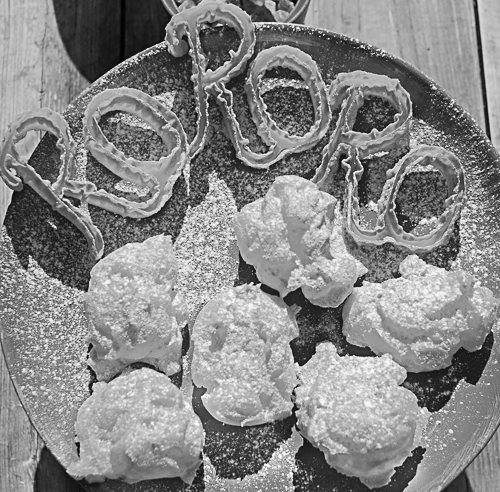A place located behind the eternal snow, would maybe be how the writer and Nobel Laureate Bjørnstjerne Bjørnson would have described the place where the Cultural Cottage at Ro is located.
High up the side of a valley you will find food and culture in a class of their own. Soil to Table went there in the beginning of May 2010.
Here at the Cultural Cottage at Ro, we give our guests a taste of courses from the inland of Norway and we join the best Nordic ways of preparing food together with culinary traditions from abroad. Ruud gård is a mountain farm with old timber houses and steep hillsides. There are horses and chickens together with a herb garden and flower beds located high and low. They house guests in both small and large groups, but you have to book in advance because they start preparing the food 3 days in advance.
Having had a look at their web site, we were excited about visiting the owners of Ro and to see for ourselves if it was really true. We arrived at the farm in nice, but cold, spring weather.
Tor Jacobsen and Lina Dybdahl received us in the middle of both serenity, hustle and bustle, because they were busy preparing meals for a confirmation. However, they were able to talk while working and fortunately being photographed as well.
It’s not easy to describe what Lina and Tor are doing at Ro. They manage somehow to connect nature, the crops of the land and local traditions together with culture in a credible and natural way. An example are new sprouts of the caraway plant which was connected with strong, cultural personalities like Bjørnstjerne Bjørnson and the writer and Nobel laureate Sigrid Undset. They harvested new sprouts of the caraway plant from their own herb garden and used old, tried and true recipes. A good story was of course a part of the meal. I want to eat the spring, as Bjørnson said after having been ill for a long time.
Lina and Tor are fond of travelling and are always open for impulses from outside, which they then can make use of at Ro.
We were allowed to watch them preparing courses for the confirmation together with visits in the herb garden, a traditional Norwegian storehouse and the smokehouse. We were also served a delicious meal of smoked salmon, fried pike, fresh meat, cream puff with soured fresh cheese from Holen farmhouse dairy.
John and I thanked Lina and Tor for letting us visit them and for the delicious food, before leaving and letting Lina and Tor finish preparations for the confirmation.
It’s rare to meet people of such integrity and with such meticulous care of culture and food. We advise you to visit the Cultural Cottage at Ro and allow yourself a lesson in how to prepare real, slow food together with a talk on the great, local writers of the Gudbrand valley, Bjørnson and Undset besides writers on food in general.
Editor’s note: I’m surprised at how many subjects we managed to talk about during our short visit ranging from the lean, Norwegian pigs, the best salmon which is exported, the cook and cookbook writer Hanna Winsnes and shabby households, hermetic pork rib, lard, herbs, the freshwater fish called pike, 1905 (the year Norway became an independent country), Grüne Woche, viking ships, Fredrik Drum and casseroles, Bologna, the herb angelica from Voss, a carp fish called carassius, baking and the good life in France, everything woven together in what we call food culture.

